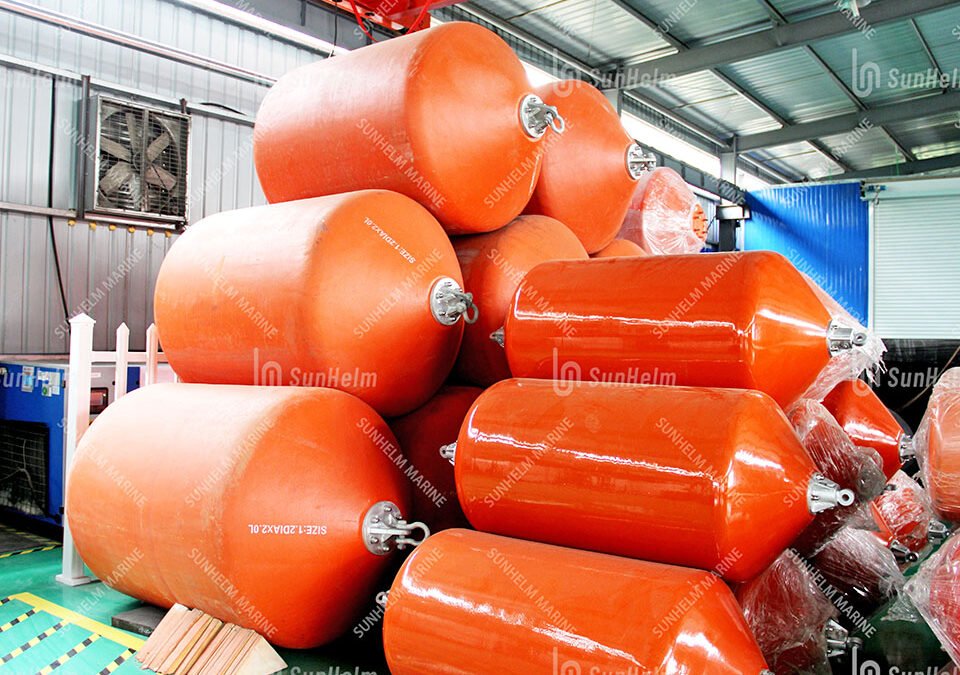Why This Issue Is Necessary and Urgent
If you operate a marina, work in shipping, or own a vessel, you know marine accidents don’t wait. Foam-filled fenders—like marine fenders, ship fenders, and Sunhelm foam filled fenders—often take the brunt of impacts. A small tear doesn’t just reduce performance; it can compromise safety and cost you thousands in replacements. Imagine a busy port where a damaged fender fails during docking—it’s not just inconvenient; it’s urgent. That’s why knowing when and how to repair foam fenders can save you time, money, and headaches.

Quick Answer: Yes, foam fenders can be repaired, but results vary
Minor surface damage (scratches, small cuts) can typically be fixed with polyurethane repair kits or rubber patches, restoring both appearance and function. However, severe damage—such as punctures that expose the foam core or skin tears into core material—often leads to water ingress. In such cases, replacement is usually the safer, long-term solution.
Understanding This Before You Dock
Before you rush into repair, ask yourself: Is the damage purely cosmetic, or has the core been compromised? Picture a foam-filled ship fender with just a superficial dent—it’s ideal for quick field repairing. But a deep gash means water could ruin the foam inside, turning it heavy and sinking. This isn’t just theory—it’s based on real-world experiences, like the repair using Belzona elastomer compounds on $20K fenders, saving thousands and extending service life by training crew to handle repairs.
How to Repair Foam-Filled Fenders
- Surface Scuffs & Minor Cuts
- Clean the area.
- Sand lightly and apply a polyurethane patch kit.
- Cure as instructed—field-ready in hours.
- Great for routine maintenance and small damages.
- Moderate Damage (Skin Torn but Core Intact)
- Cut back damaged skin.
- Apply elastomer repair compound over the foam.
- Cover with reinforcement tape or mesh (e.g., Belzona system).
- Finish with polyurea or polyurethane outer coat.
- Severe Damage (Core Exposed/Waterlogged)
- Remove damaged skin fully.
- Drain or remove wet foam.
- Either refill with closed-cell foam or reinforce with fibrous inserts.
- Recover with new skin layers.
- In many cases, replacement may be safer and more cost-effective.
Featured Snippet Optimizations
What types of damage can foam fenders withstand?
Minor surface cuts and scuffs can be repaired using polyurethane kits; deep punctures that breach the foam core usually require replacement, as water intrusion compromises buoyancy and integrity.
Can foam-filled fenders sink if damaged?
Yes—if the outer skin is torn and water enters, the foam becomes waterlogged and sinks. Repair kits are for surface damage only; core exposure mandates full replacement.
Why Repair vs Replace? A Sunhelm Perspective
Sunhelm’s rugged foam filled fenders are built for longevity—no valves, no inflation worries, and an outer polyurethane shell rated 10–15 years. So, repairing small issues makes sense: it maintains performance, is cost-efficient, and avoids downtime. But for severe damage, Sunhelm always advises inspection and possible replacement to ensure safety and buoyancy.
FAQ – Foam Fenders
1. What is a foam-filled marine fender?
A buoyant, floating fender with a closed-cell foam core encased in a durable rubber or polyurethane coating—designed to absorb impacts while maintaining buoyancy.
2. Do foam-filled fenders need maintenance?
Yes—especially the skin. Sunhelm foam fenders require less upkeep vs pneumatic ones, but regular inspection and cleaning help extend life and prevent minor damage from becoming major issues.
3. Can you patch a ship fender’s foam core?
Yes—if the damage is shallow. Remove the damaged skin, inject a bonding foam, apply patch compound, then reseal. But if the foam is saturated, patching is usually temporary—full replacement is safer.
4. What materials repair foam fenders?
Commonly used are polyurethane patch kits, elastomeric repair compounds, reinforcement tapes like Belzona 9341, and closed-cell foam refill for deep wounds.
5. How long do repaired foam fenders last?
Minor repairs can last seasons; thorough rebuilds with proper materials and techniques can match the original service life. Severe core damage often means the lifespan is not recoverable—only full replacement guarantees reliability.
Final Take
Keep small dings minor: repair surface damage quickly with kits to enhance performance and longevity.
Assess carefully: if the foam core is exposed and wet, don’t gamble—replace it to avoid failure.
Trust Sunhelm: quality foam fenders boast durability and cost-effective repairs.


